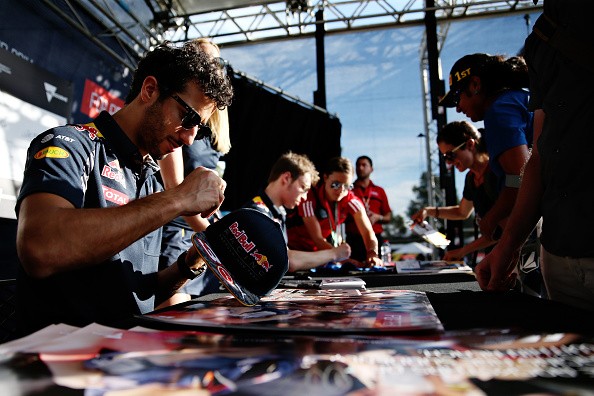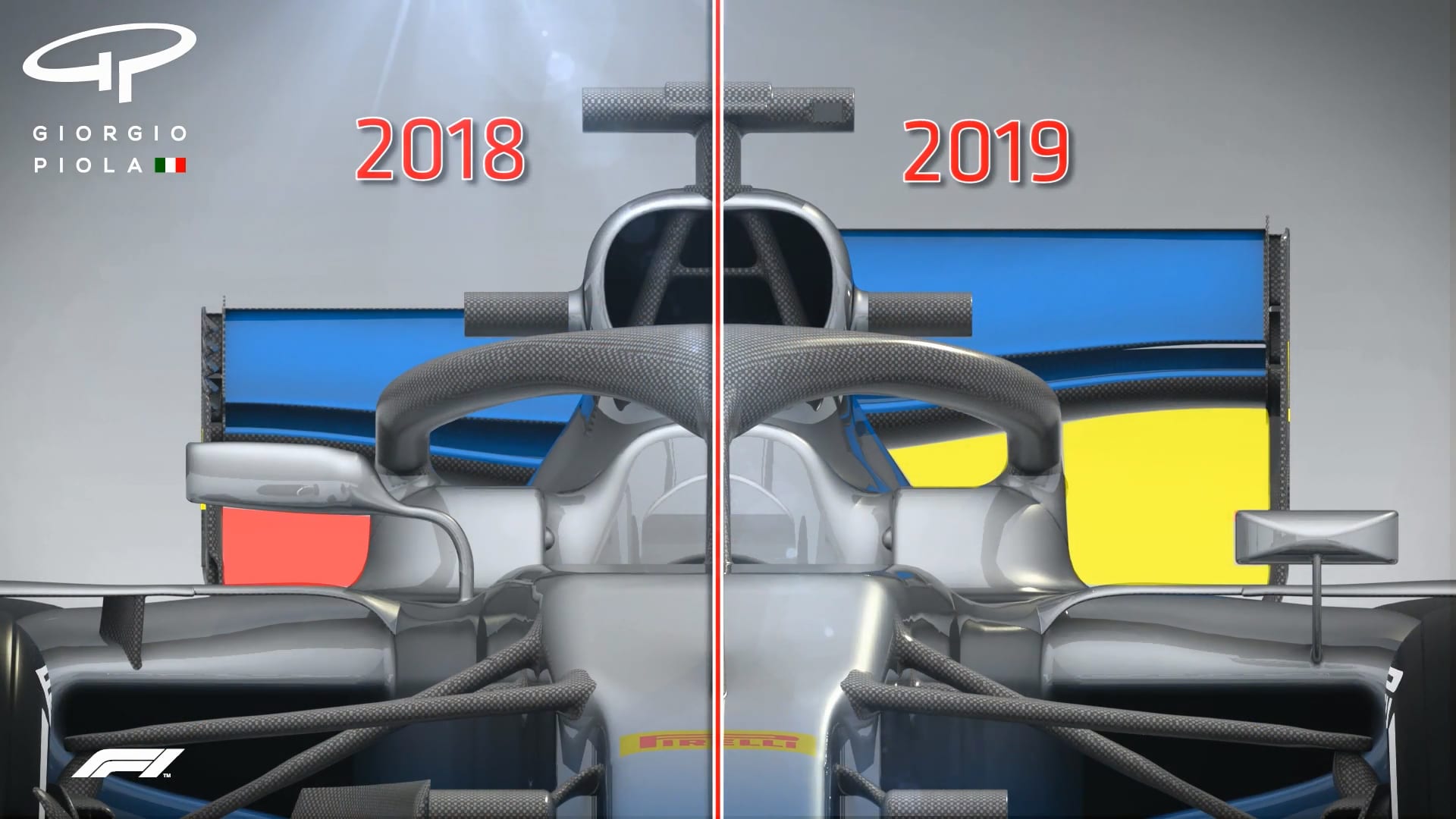Had he won the world drivers' championship in 2010 he would have been the tallest F1 world champion in the history of the sport. During his 12-season F1 career, Webber has always done what was expected of him as a well-paid, professional sportsman - he met his team's weight targets. Webber squeezed his 185-centimetre, 75kg body into claustrophobic cockpits in the name of his craft. But we hope to update this how tall are formula one drivers post in the future so do check back later. Each driver in formula 1 has a permanent race number, chosen by them upon entry into the sport.
Do you know who is the tallest formula 1 driver today? Mansell, the 1992 formula 1 champion, started on the pole 32 times in his 191 career race entries. You can't aggressively block a driver that's trying to pass you; Find out which formula 1 driver is top of the fia formula 1 drivers championship on bbc sport. Of that arose its formula 1 driver height limit to the system. So when you think of f1, you often forget that those drivers, important and vital though they still appear, are genuine world class athletes. I remember the days when berger's helmet would partially block the.
You would require 23 clones of each formula 1 driver all stood on top of each other to make a tower as tall as the burj khalifa in. A race that will long be remembered for its tense battle between two drivers seeking their first formula 1 victory featured a pair of standout drives that couldn't be separated in our ratings add your ratings. Once a driver has chosen a number, that number will be reserved for them until their career is finished (a career is deemed to be finished once. Australian driver mark webber (team jaguar, now. Article To news overview © F1 F1 drivers come in all shapes and sizes, but who are the tallest and shortest to compete in the sport since the turn of the century?
As it stands, the late Justin Wilson is the tallest driver to have raced in F1 in the modern era . Wilson contested his one and only F1 season in 2003, initially representing Minardi before switching to Jaguar. At a height of 193cm , he was 7cm taller than the next group of drivers on the list, comprising Alex Albon, Alexander Rossi and Alexander Wurz . Wilson tragically died from injuries sustained in an IndyCar race in 2015 after debris from a crashed car struck his... Statistically michael schumacher is the most successful f1 driver of all times.
Once a driver has chosen a number, that number will be reserved for them until their career is finished (a career is deemed to be finished once. But taller drivers don't have to run over the minimum weight limit, so their disadvantage is not this great. Teams are usually able to get their cars far enough under the minimum weight limit that even the heaviest drivers don't carry more weight on the track than their lighter rivals. Formula One, abbreviated to F1, is the highest class of open-wheeled auto racing defined by the Fédération Internationale de l'Automobile , motorsport's world governing body.
The "formula" in the name refers to a set of rules to which all participants and cars must conform. Each year, the F1 World Championship season is held. It consists of a series of races, known as Grands Prix, held usually on purpose-built circuits, and in a few cases on closed city streets. Drivers are awarded points based on their finishing position in each race, and the driver who accumulates the most points over each championship is crowned that year's World Drivers' Champion. The trend for taller drivers to weigh more is clear. The 10 shortest drivers have an average weight of 64.9kg, the 10 tallest are 4kg heavier on average.
Before entering the minimum weight regulation of 80 kg in 2019, taller and heavier drivers were at a disadvantage because they lost time on the track, as lighter drivers' cars carried less weight and could go faster. Formula 1 drivers may be racing at the highest level of motorsport but they're not the tallest bunch. Yuki Tsunoda who, at 5ft 2in, is the shortest driver on the grid, explained ahead of his F1 debut how AlphaTauri have had to adjust his new car to ensure he can race it comfortably. The site looked at drivers throughout NASCAR history to see if any discernible pattern showed an advantage for smaller drivers.
Because horseracing places weight limits on jockeys, one might think the same for NASCAR and its drivers. But in the world of stock car racing, a driver's height and weight aren't as important as talent and fast reaction times. As compiled by Racingnews365.com, the following tables show a complete list of who the tallest and shortest drivers to have raced in F1 since the 2000s. How great an advantage this is has varied over the years depending on how difficult teams have found it to hit the minimum weight limit. For example when the KERS hybrid boost was introduced in 2009 some teams could only justify the weight penalty of running it for their lighter drivers. At BMW, for example, the heavier Robert Kubica had to make do without KERS but team mate Nick Heidfeld had it.
The advantage shorter drivers have is that the ballast they carry to reach the minimum weight limit can be placed in an optimal position on the car. That means on the floor, and either forward or rearward as the car's set-up requires. Teams spend millions shaving grams of weight from their cars, so an F1 driver has a strong incentive to get their weight as low as possible while still being strong enough to drive the car. But becoming shorter isn't a realistic option, so taller drivers are inevitably at a disadvantage. To compensate for this loss of time, taller and heavier drivers had to make certain sacrifices to compete on the same footing as their peers.
They had to follow strict diets to lose weight or give up certain functions, such as drinking during the race to avoid carrying water or the KERS system. Key to the situation is the minimum weight specified for car and driver by the FIA. This is currently set at 642kg, which the teams do not reach. Next season, with the new 1.6-litre V6 turbo engines and attendant energy recovery systems, the minimum weight has been raised to 690kg. If it isn't his chiseled features and glistening blue eyes that makes Max Verstappen a chart-topper, it's his impressive racing record.
The Belgium boy is the son of former Formula One driver Jos Verstappen. He is also the youngest race winner in F1 history. At the tender age of 19, he emerged as fifth overall in the 2016 World Championship in Brazil.
After all, the cockpits tend to be larger than the open-wheel cars. I happened to find this lovely infographic summarizing the F1 drivers height. If I had about 10 days free, I could do this with the NASCAR drivers. I'm not sure if this is an official F1 graphic, as even the image-tracking sites I use didn't find this graphic besides the reddit board I found it on. But it is lovely and informative, so kudos to the originator.
Formula 1 drivers usually range from short to average at most. The cars are designed for smaller than average people. Maybe it's because small people have better co-ordination or something. Afterall featherweights are much quicker than heavyweights in boxing.
Introducing a minimum driver weight which is separate from the weight of the car promises to put taller drivers at less of a disadvantage. In other seasons where hitting the minimum weight limit has been difficult some drivers have raced without drinks bottles to save weight. This year designers are again finding it difficult to hit the minimum weight limit due to the introduction of Halo. Seven-time champions Michael Schumacher and Lewis Hamilton hold the record for the most championships. Hamilton also holds the record for the most wins with 103, the most pole positions with 103, the most points with 4165.5, and the most podiums with 182. Kimi Räikkönen has entered more Grands Prix than anyone else and also holds the record for the most Grand Prix starts .
The United Kingdom is the most represented country, having produced 163 drivers. Indonesia became the latest country to be represented by a driver when Rio Haryanto made his Formula One debut at the 2016 Australian Grand Prix driving for Manor Racing. The most recent drivers to make their Formula One debut are Nikita Mazepin, Mick Schumacher and Yuki Tsunoda, who debuted at the 2021 Bahrain Grand Prix. In more recent times, there have also been drivers who have struggled with weight. When Juan Pablo Montoya joined McLaren in 2005, he had to go on an aggressive diet regime because he physically did not fit in the car.
In the past decade, tall drivers like Hülkenberg had weight problems, not because they were fat, but because of the minimum weight. Starting in 2006, with the change from V10 to V8 engines, the concern of heavier drivers who exceeded the minimum weight increased, as they were forced to lose weight to compete equally, which could affect their health. On the current Formula One grid, the tallest driver honor will be shared between Williams' Alex Albon and Alpine's Esteban Ocon; both standing tall at 186 cm. Meanwhile, AlphaTauri's Yuki Tsunoda will be the shortest driver on the grid as he heads into his second season of Formula One. For the fourth year in a row, Williams have the tallest driver line-up, with both George Russell and Nicholas Latifi standing at 185cm. Their combined height is 10cm taller than the next tallest line-up at Alfa Romeo.
AlphaTauri become the team with the shortest driver line-up, with Pierre Gasly and Yuki Tsunoda reaching a combined height of only 336cm – 11cm shorter than the next shortest line-up at Mercedes. At 193cm, the tallest driver to race in Formula 1 this millennium is Justin Wilson. Wilson drove for Minardi and Jaguar during the 2003 season.
Wilson was 7cm taller than any other driver to race in F1 since 2000. In 2021, Yuki Tsunoda became the shortest driver to race in F1 this millennium. Standing at 159cm, Tsunoda is 4cm shorter than previous shortest driver Anthony Davidson. This, right from the pickup, gives you a nice and linear acceleration. Start going on the throttle and the Astor builds speed in a strong manner. And because this is a torque converter automatic, the turbo lag is taken care of and you don't struggle for power while cruising in the city.
Start going heavier on the throttle and the same linear acceleration greets you. It's not very exciting but there is ample pull for overtakes. At BIC, we recorded a 0-100kmph time of 10.76 seconds, which is impressive.
And the Astor kept pulling ahead as well, with a recorded top speed of 164.33kmph. So be it city commuting or highway touring, the Astor, at least in its turbo guise, will manage it without breaking a sweat. Even the transmission, though a bit slow to shift on a racetrack, should feel fine in the city. Here, drive modes could have helped the Astor have a better dual personality. Enlightening though it may be, we didn't travel to Silverstone just to talk about the increasing height of grand prix drivers.
Ocon is a rising star of Formula 1, a man marked for greatness before he was out of his teens. After a part season with tail-enders Manor last year, 2017 sees him step into considerably more competitive machinery at Force India. The first thing that strikes you about Esteban Ocon is his height.
Esteban looks like he could have been a model with his brown hair and ripped body. The French driver who made his Formula One debut in 2016 races under Force India. He holds an all-time record for most consecutive finishes from start of career, with 27.
The Frenchman is one of the tallest drivers in F1 and has suffered a weight penalty as a result, and will not benefit from the first year of the introduction of a minimum driver weight. I used that data to plot 2015 NASCAR vs. 2015 F1 heights. The average male NASCAR driver is 69.8″ compared to the average F1 driver, who is 69.3″. So NASCAR drivers are taller by a whopping five tenths of an inch, which is a little more than one centimeter. And that's probably not quite accurate because the F1 drivers all include 1/2-inch measurements and most of the NASCAR data are to the nearest inch.
A result of these regulations is the liklihood teams will not look to drivers who don't meet an ideal minimum in weight and height. As reported by Motorsport-Turkey, the Mercedes driver is not one of the larger drivers in the starting field. Compared to other riders, Lewis tends to be on the shorter side in height. But he's on the heavier side compared to other riders. Hamilton has set almost every single record in the sport. He has the most wins, pole positions and podiums in the history of the sport.
He is the only driver to have won a race in every season he has raced. This consistency can only be achieved if you are passionate and physically fit. The 32+ Little Known Truths on Formula 1 Drivers Height! Sky sports brings you the latest news, race results, video highlights and standings — by driver and team — in the world of formula 1 racing. › The 32+ Little Known Truths on Formula 1 Drivers Height! For example, in 2009, when the KERS system was introduced, some heavier drivers, such as Robert Kubica, could not afford to install it not to carry more weight, while their lighter teammates could.
This was a distinct disadvantage as the KERS system gave you a quite noticeable boost per lap. This makes him one of the tallest drivers on the grid and certainly one of the taller drivers that you see in the sport. On the current grid, Alex Albon is the tallest driver. His height has been recorded at 186 cm, making him taller than the next drivers on the list in Esteban Ocon, George Russell and Nicholas Latifi.
The tall answer is the late Justin Wilson, who is the tallest F1 driver of the modern era. Wilson only ever raced for one season in 2003, having competed for Minardi before making the switch to Jaguar. He stood at a towering height of 6'4", and was 7 cm taller than the rest on the list. Esteban Ocon is the tallest driver on the 2021 grid, standing at 186cm.
How Tall Is The Tallest F1 Driver Last year, he shared the award for tallest driver with Alex Albon. There are certain places where MG has been a little shy in quality - like the glovebox and grab handles do not soft close; the centre armrest lock feels flimsy; and the door pads, apart from the leatherette, feels hard. But these elements are cleverly placed and won't hamper the cabin experience in daily drives. The dashboard layout feels clean and the 10.1-inch touchscreen sits in the middle, easy to reach from the driver's seat. Also clear to read is the 7-inch digital instrument cluster with the speed and tachometer on either side. The height difference between the tallest and shortest Formula 1 drivers.
VICE Sports sat down with rising F1 star Esteban Ocon to discuss the new grand prix season, his old rivalry with Max Verstappen, and looking down on his rivals as the tallest driver on the grid. Unnoticed it may be, but it also might yet prove to be detrimental to the sport in the longer term. "You could have a very talented driver who could be missed for his height and weight," said Button.
"If he is over the weight by five kilos that is 0.2 seconds a lap and it is the end of your career." The 35-year-old's boyish good looks and washboard abs have won over a league of gorgeous models and pop stars, including longtime ex Nicole Scherzinger. Lewis hasn't just got it in the looks department, he is also one of the most recognisable F1 drivers to those outside the racing world.




























No comments:
Post a Comment
Note: Only a member of this blog may post a comment.